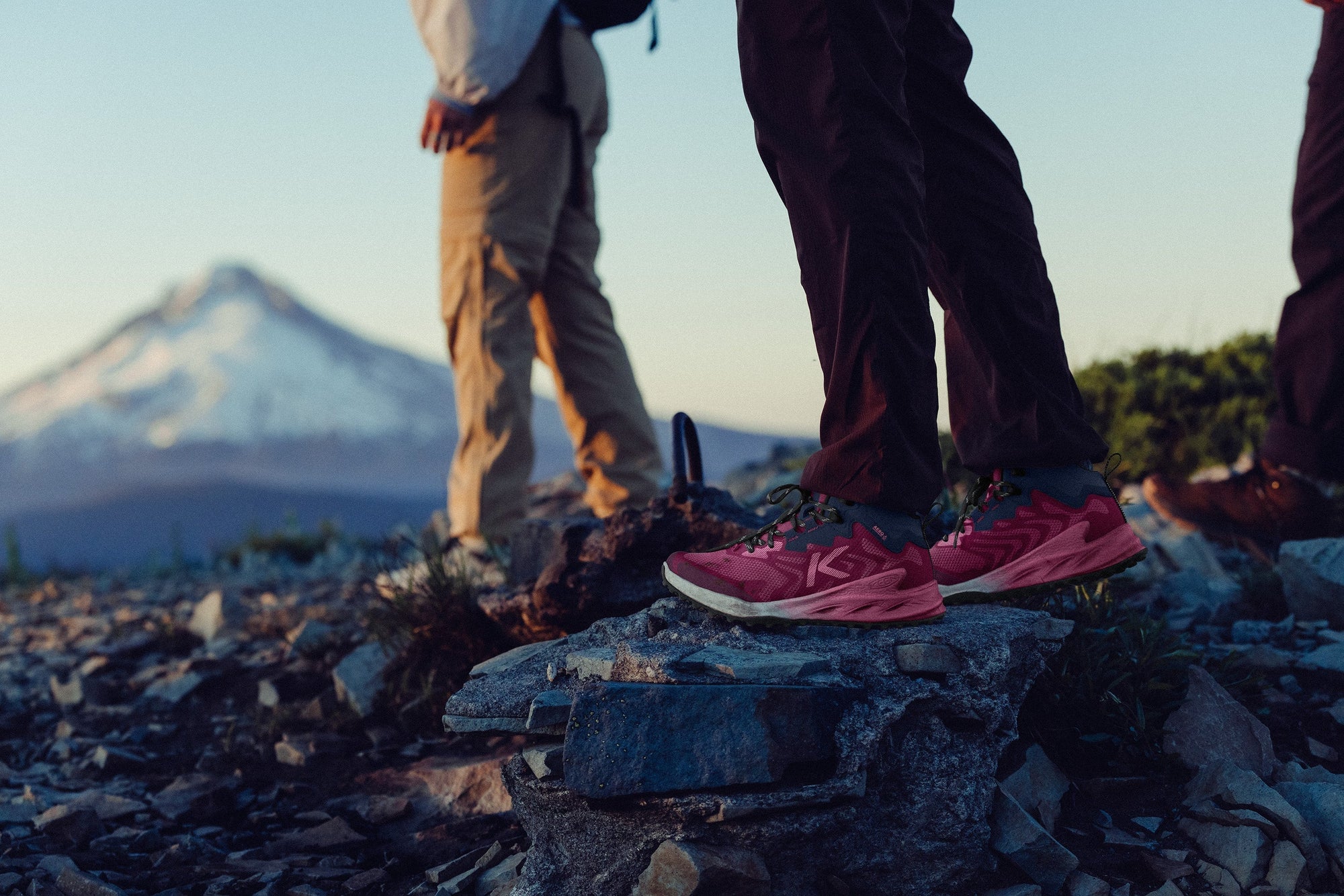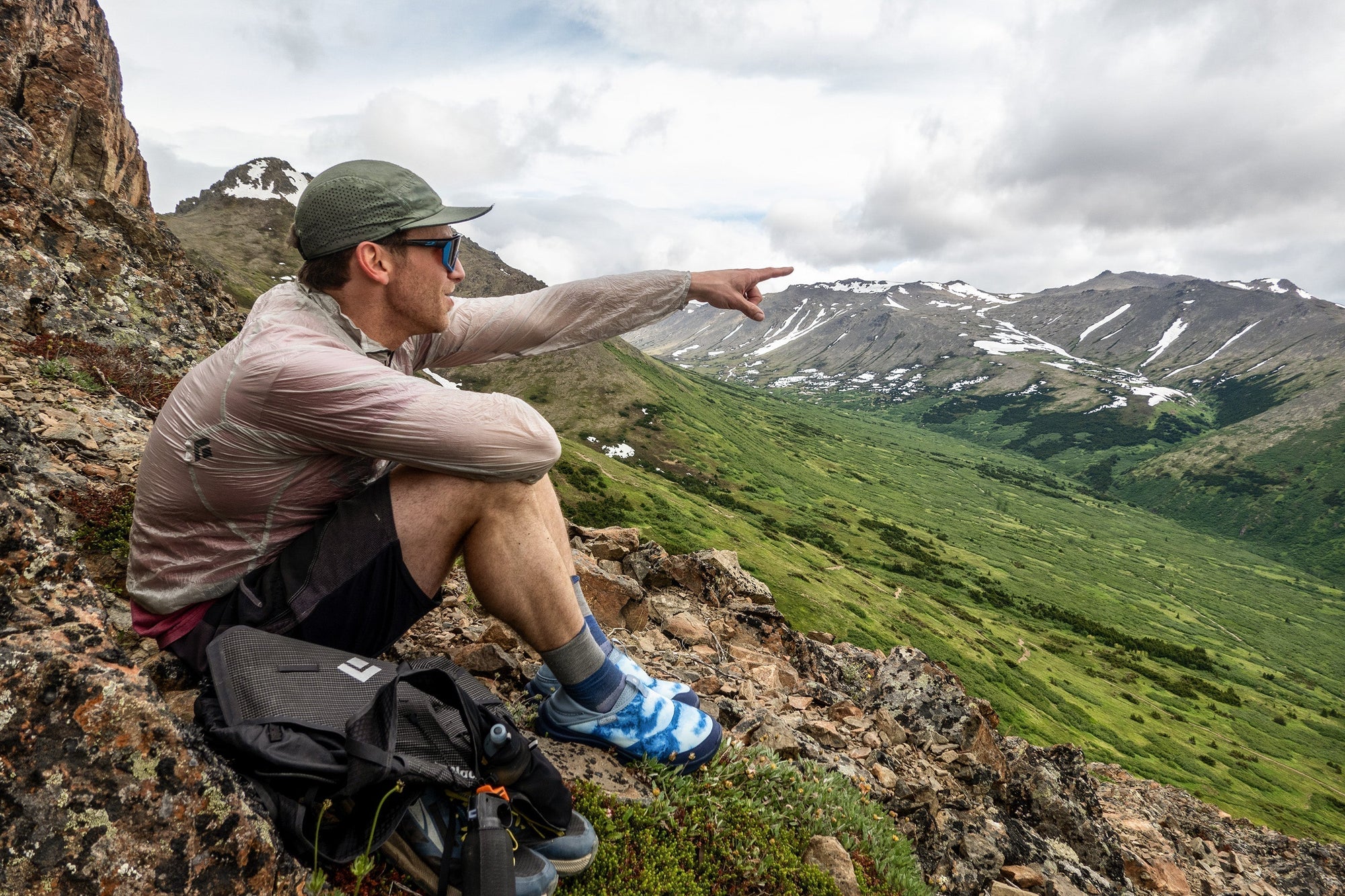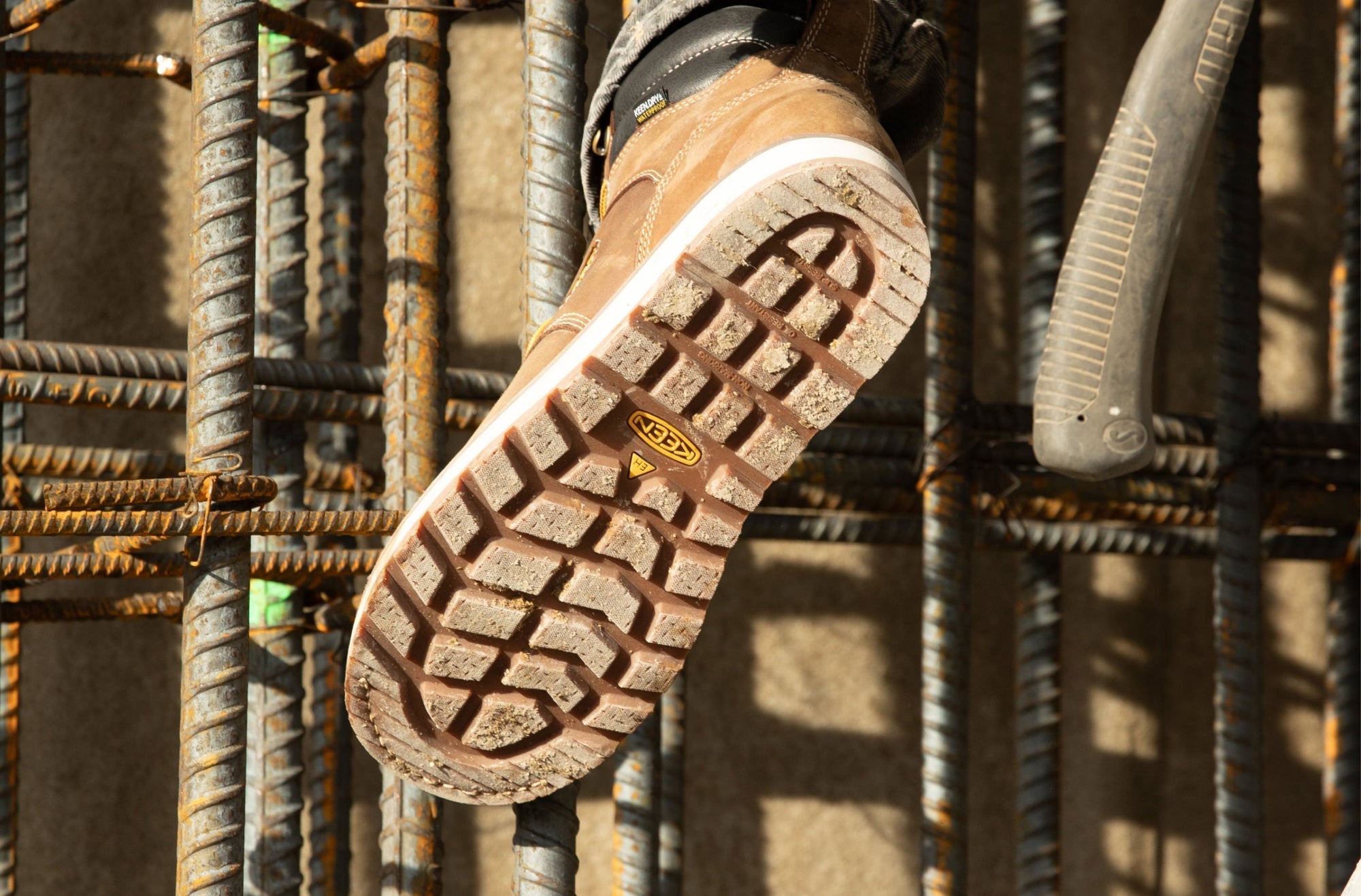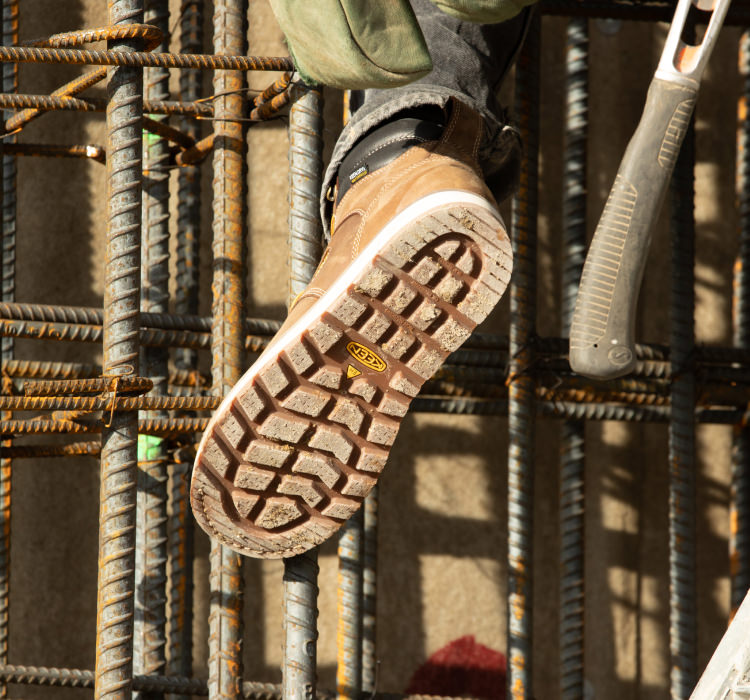We live in an amazing place. We work for a unique and amazing brand.
As a KEEN employee, we are encouraged to get outside and volunteer in the community*. The brand is a young one at 15 years old but has a credo of giving back and paying it forward. As we say, “We are not just here to make shoes.” By creating original and versatile products, we’re on a mission to improve lives and inspire outside adventure.
So, on a recent Tuesday, 14 of us loaded up the KEEN Sprinter van and headed to eastern Oregon, specifically to Beech Creek, a tributary of the John Day River just outside of Mount Vernon, OR. Our goal over four days was to help restore the vegetative corridor and fish passageway through the area by planting trees, pulling invasive species, and helping tend to 2,400 acres of land. Our work, coordinated by the KEEN Effect team (the corporate responsibility department of KEEN), brought us face-to-face with our values of “working to leave the world a better place than we found it by giving back, taking action, and reducing our impact.”

Once we arrived at Beech Creek, we were met by two natural resource managers and our contact at the Oregon Natural Desert Association (ONDA). These guys are cool. With more than 10,000 members and supporters, ONDA is the only conservation organization dedicated exclusively to preserving Oregon’s high desert. KEEN has worked with ONDA in the past, and they often act as our brand’s bridge to the land.
“This majestic property is within the John Day River Basin, an area that ONDA has focused on since its inception more than 30 years ago,” remarks Ben Gordon, Stewardship Program Director at ONDA. “We are honored to partner with the Burns Paiute Tribe to help them reach their restoration goals for Beech Creek to enhance native fish and wildlife habitat while increasing opportunities for tribal members to hunt, fish, and gather traditional foods, goals that align with our own.”
All of this seems way more important now than ever, given the constant threats these high desert landscapes face from waning protections, climate change, and other emerging threats.
It was beautiful. As a city slicker, many of us don't really understand what 2,400 acres looks like. The history of this land goes like this: In 2016, the Burns Paiute Tribe purchased the land from a private party that wished for the land to be transferred into long-term stewardship that would give priority to fish, wildlife, and natural resources. All of this seems way more important now than ever, given the constant threats these high desert landscapes face from waning protections, climate change, and other emerging threats.

As Calla Hagle, a wildlife program manager with the Burns Paiute Tribe, explained, stream flows along the meadows no longer flood as they used to, and may have led to an impairment of trout and salmon runs. Our goals as a team for the next four days were focused on helping restore the riparian vegetative corridor. “But what does ‘riparian’ mean?” asked many of us. Riparian refers to any land or water within or adjacent to the high water mark of a river or stream. It’s important for fish and wildlife and for healthy irrigation and hay productivity.
So, for us, that meant planting willow trees along the banks of Beech Creek to stabilize the banks and provide shade to cool the waters for spawning native trout and salmon. We were tasked with planting 160 plants in non-irrigated areas and to also remove non-native and invasive plants, which improves soil conditions and provides space for native plants to move in. Basically, we were gardening on someone else’s beautiful land for the week.


The first thing we did was set up camp. We pitched our tents on a meadow near Beech Creek and soon after built a fire and began roasting hot dogs. There is something inherently awesome about an early summer fire, armed with beer, hot dogs, laughter and random stories. It makes the group bond in a special way. Then it was time to rest under the stars and prepare for a day of working on the land. Here’s how it went, and some of the things I took away from the experience:
Camping Builds Camaraderie
Although we are a small brand, most of us volunteers didn’t really know one another. Most of us were from different departments, and did unique, different jobs for our brand. And to our delight, work discussion was largely not on the table as we hung about the fire. Jobs and responsibilities gave way to stories about camping, cooking over fire, pets, kids, favorite places to visit and other topics far from making, selling, developing, and marketing footwear. And beyond helping out, this organic form of camaraderie is a lot of the reason we were there.
Work, Work, Work Needs Play
Day one was dedicated to planting native Booth Willows, Cottonwood and Dogwood trees. Additionally, we pulled mustard plants, and knapp weed. Once the thunderstorms came rolling through, as they do in this part of the state in late spring, we retreated back to camp for a hike and to dry out. Day two was more of the same, planting, weeding and enjoying sandwiches like only one can after a hard morning of work. Some of the team took off to fish on the John Day river. Some of us lounged in the cold run-off of the river.
Campfires Are the Best
Our last night was a magical time of stories, guitars, and singing. There was laughter and good times, food and then off to bed. Sleeping in a tent, after a long day of working on the land, is kinda awesome.
The next morning we awoke to rain. Tired, wet, dirty, and hungry, it was time to pack it up and return home. I couldn’t help but reflect and wonder, “Was our work necessary? Were we pulling one of millions of weeds on massive land?” Perhaps, but it was more about doing the task, and doing it with colleagues, now on a closer plane.
We passed through the Painted Hills and other parts of our great state, both picturesque and also mundane. And after more stories, road trip tunes, and a quick pit stop for fast food, we arrived back at work. We would trade in weed-pulling for computer screens after the long weekend…most of us looking forward to the next KEEN volunteer trip.
*Every full-time employee at KEEN gets 40 hours of paid volunteer time per year to work in the community, in addition to company-wide volunteer days. It’s rad.
Restoration of the Beech Creek property will require the work and dedication of many people for years to come. KEEN has committed to steward this landscape for two years, but ONDA's other incredible volunteers will help with countless other critical projects along the riparian corridor before this returns to the haven for native fish and wildlife it once was.













